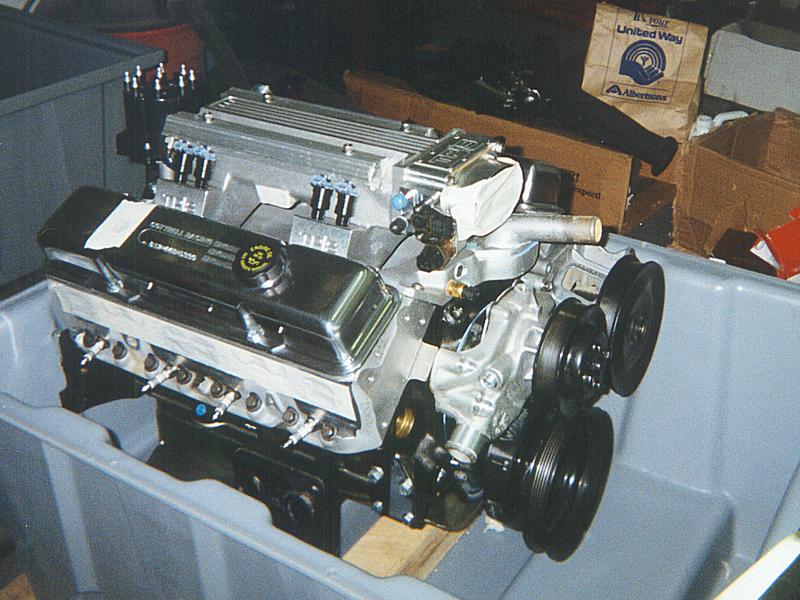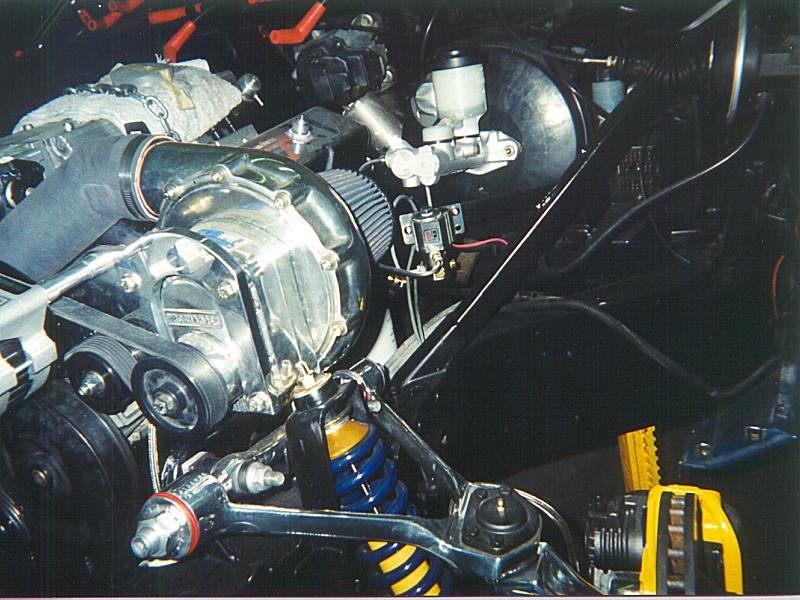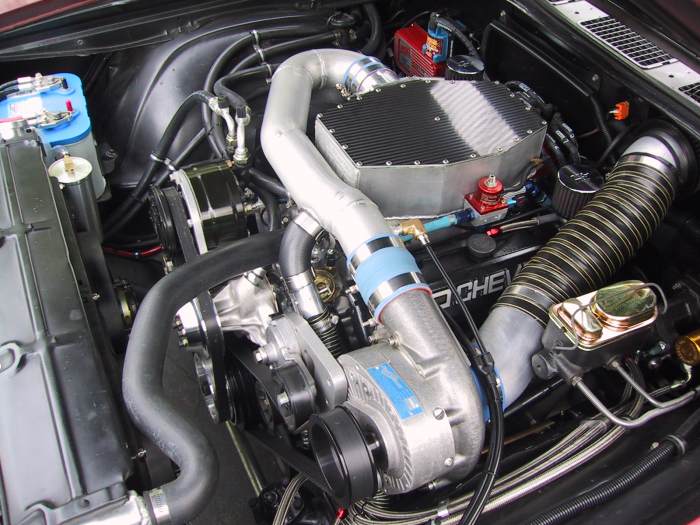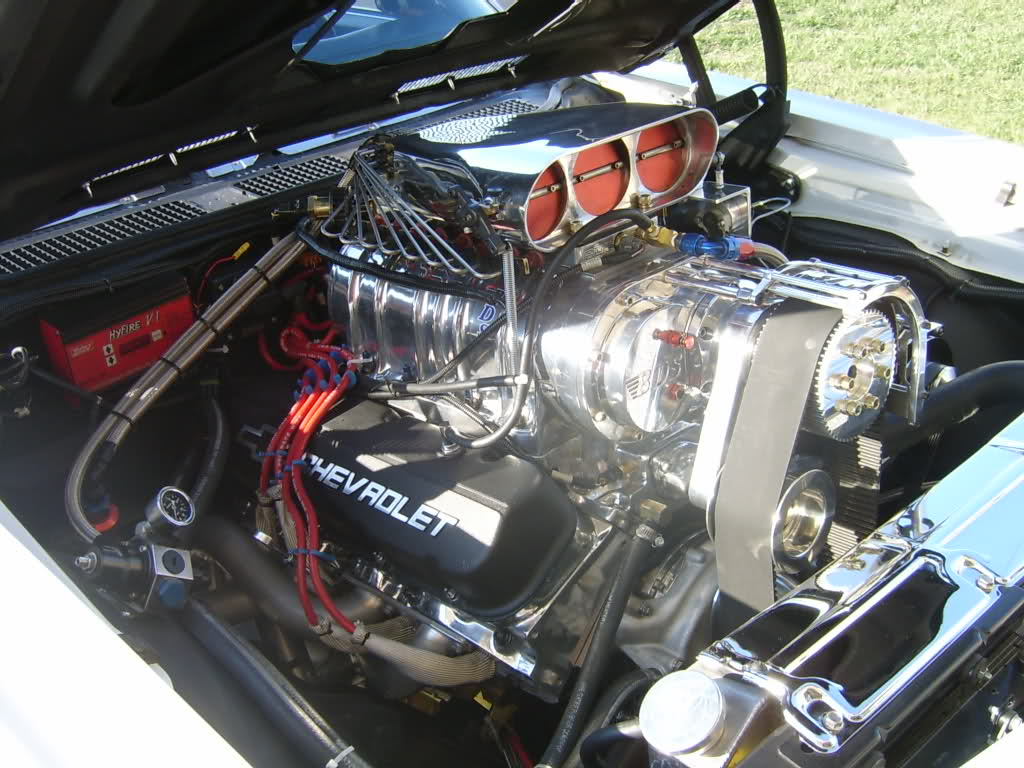http://www.blowerdriveservice.com/faq.php
MOST ASKED QUESTIONS ABOUT BLOWER MOTORS
QUESTION ANSWER
What cam works best with a supercharger? A camshaft profile that has been designed to work with a supercharger system will provide more horsepower and torque. If you have a secret application, BDS recommends a hydraulic or flat tappet profile cam shaft.
What carbs do I need to run and why 2 of them? The size of carb(s) or CFM required for a given application can be calculated by the following formula A: {(CID x RPM) ÷ 3456} x {Boost ÷ 14.7) + 1} = CFM required. The amount of CFM required will determine carburetor size and quantity. If you try to use a carb with less CFM than required, performance and economy may be greatly reduced. Bigger is not always better when selecting carbs that are 30% over what is required, you may encounter problems in fuel distribution.
When do I start making boost? The amount of boost and the RPM at which boost starts is controlled by the throttle, blower size and drive ratio, engine size, camshaft profile, and exhaust system. All of these factors determine the breathing capability of the blown engine. Boost should only be measured at wide open throttle at 6,000 RPM. If there is only part throttle, the blower cannot get enough air to overcome the demands of the engine. Only when the blower can get enough air will there be boost.
Why are my exhaust pipes red-hot? Exhaust pipes get red hot for two basic reasons. Either the ignition timing is incorrect or the engine is running extremely lean. There are other causes but these are the two most common, ignition timing is extremely critical. Blown motors love advance. Without enough initial timing advance, blown motors will run hot and the exhaust pipes will glow in the dark. Blown motors should run as little as 16 degrees or as much as 26 degrees initial advance with the total advance of about 32-36 degrees at 2500 RPM to 3000 RPM. Specific timing requirements depend on compression, blower drive ratio, engine load, camshaft, and fuel octane.
Why does my engine run hot? Over heating of a blown motor may be cause by too high compression ratio, too high blower drive ratio, improper timing, poor water flow through manifold, or an inadequate and inefficient cooling system.
How does retarded timing attribute to overheating? Ignition timing deals with the time at which ignition occurs during the compression stroke. Retarded timing ignites the air/fuel mixture closer to maximum compression than advanced timing. Higher compression at the point of ignition means hotter temperatures form the burning of the air /fuel mixture and this translates into a hotter running engine.
Which is stronger, 1/2 pitch or 8mm drives? The 8mm, round tooth profile is capable of transferring as much as 40% more power than the 1/2" pitch, square tooth profile. As a general rule 1/2" pitch is good up to 12-15% overdrive on most blower applications. Large blowers and high drive ratios should use the 8mm or 14mm, round tooth design.
How much space does a blower drive take in front of the engine? The amount of space on front of the motor for the blower drive system depends on the width of the blower pulleys and the number of accessory vee groove pulleys needed for each application. An easy rule of thumb is to add the width of the blower pulleys to the front edge of the vee pulley furthest from the engine block.
When I start my car it backfires. Why? There are many reasons why an engine will backfire but the most common problem with blown motors is holding the throttle open while cranking the engine over. It is better to give the throttle a few pumps (2), and take your foot off the accelerator before turning the engine over and count slowly to ten. When the engine does fire and begins to run, quickly catch the throttle and raise the engine idle at about 1500-2000 RPM until some heat can be built in the motor, about two minutes. Trying to engage the engine before enough heat is built usually results in an engine that spits, sputters, backfires, and/or dies.
Do I run an oil line from the blower to the engine? BDS recommends using a self-contained system, using a 80-90 weight heavy duty gear oil lubrication. Contaminating the engine oil in the motor with 80-90 wt. oil can cause some engine lubrication problems and increase the likelihood of detonation.
Should I use gapless rings? Testing with gapless rings in a supercharged engine shows excellent increase in performance.
Which are better - steel or aluminum rods? Both styles of rods are well suited for blown applications. Steel rods are generally used on motors that must produce a long service life. Aluminum rods are generally used for engines seeking high horsepower output and not long service lives.
Can blower whine be eliminated or made louder? Blower whine can be increased or decreased by tightening or loosening the blower belt tension. CAUTION! Improper belt tension can cause severe belt, blower, and engine damage. It is not recommended to adjust the belt to get the sound you want. Worn pulleys and belts as well as mis-machined pulleys can contribute to blower whine.
What kind of headers should I use? Most supercharger applications require larger than stock size to facilitate better exhaust flow. Steel, or stainless steel headers may be used. Engines with 400 CID or less should have exhaust tubes at least 1 3/4 " to 1 7/8" diameter and larger engines should use 2" and bigger. Forcing more air into the engine with the blower requires more exhaust to be passed through the exhaust system.
My engine builder is determined not to use a crank hub on my blown motor, only a harmonic balancer. What do you say? We do not recommend any type of cast iron balancer because they break easily. Any hi-quality heat-treated after market steel harmonic balancer with two key ways (one 3/16" and the second a 1/4" key way located 180 degrees apart) will perform very well. Be sure to notify BDS at the time you order your blower kit if you will be using an after market harmonic balancer. BDS will accommodate this kit change when ordered initially. On any large cubic inch high horsepower system we recommend that you use our heat-treated heavy-duty 4130 chromally steel crank hubs.
My car won't idle? Idling problems with blown motors is usually a result of a severe vacuum leak, improper ignition timing, or improperly adjusted carbs or fuel injection.
My plugs are black? Black sooty plugs is a direct result of too much fuel. The carbs or fuel injection is not properly adjusted or set up for your engine, correct your fuel delivery system.
What should my timing be set at? Blower systems work best when the ignition system is advanced. For most blower applications, the initial timing should be set at 16-24 degrees initial advance with a total of 32-36 degrees advance, in all by 2500-2800 RPM. More advance can be run if there is not a detonation problem. Some vacuum advance systems will have as much as 45-50 degrees total advance under part throttle, cruise conditions.
How tall is a blower kit? Will it fit under the hood of my car? The easiest way to figure this out is to take the measurements for the intake (get this from the intake category), blower(7.5") and carb adaptor(1") then add them up. Measure up from the top of block between the heads, of course, then you will need to add the height of your fuel system to get a height total.
Can I use a synthetic oil? Only use a heavy duty 90 weight gear oil lubrication which is a non-detergent oil and basically no synthetics. They are too thin.
I have oval port heads. Will your rectangle port work with my oval port cylinder heads? Yes. On mild street motor applications, the BDS intake will work with the oval port cylinder heads by using the rectangle port gaskets. The difference in the intake port openings has a small effect on performance with mild motor applications. For high performance racing applications, always use rectangle port performance heads.
With the pump gasoline available today, 91-92 octane, can I run a blower on my engine? With today's low octane pump gasoline, make sure to keep your final engine compression between 12:2 and 12:4 to 1 (refer to the BDS Final Compression Radio Chart). You may want to build an effective quench factor into your engine, because it will have a reduced requirement for octane. Quence is the distance between the top of the piston and the flat part of the combustion chamber. This design limits the detonation potential of your engine.
What type of pistons and compression should I be running on my blower? In the last decade as the octane rating of gasoline decreases and the demand for more horsepower increase, there is more of a possibility for detonation. Forged piston made for blown systems are highly recommended. Also using 8.5 to 9.1 compression ratio and less blower boost will keep the engine cooler. When you run a lower compression engine and raise the boost levels, this elevates the temperature of the air charge to your engine, requiring you to buy higher octane gasoline to suppress detonation.










